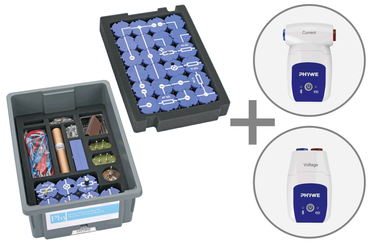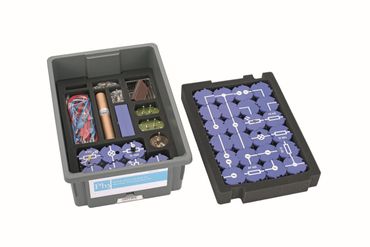Principle
Prior to this experiment, you can first pose the question of how electrical household appliances are connected. Generally some of the students know that this is a case of parallel connection.
While a fitting theoretically founded prediction on the total current can be expected from most students - provided they have the correct picture of electrical current - a statement on the total resistance can only be obtained by an experiment.
Benefits
- No additional cable connections between the building blocks needed - clear arragned and quick setup
- Contact saftey due to puzzle blocks system
- Corrosion-free gold plated contacts
- Doubled earning sucess: Electric circuit diagram on top, real components can be seen unterside
Tasks
How can the total current and resistance in a parallel connection be calculated?
Examine the relationship between the total current and the partial currents, and between the total resistance and the partial resistances, in a parallel connection.


